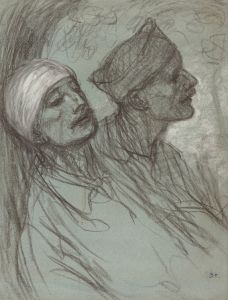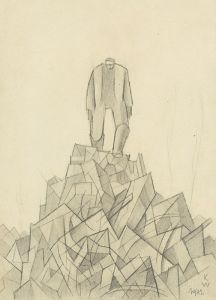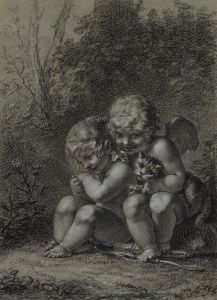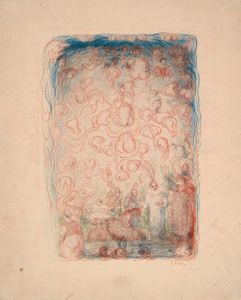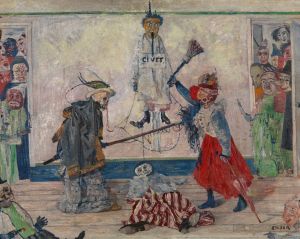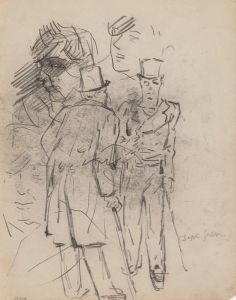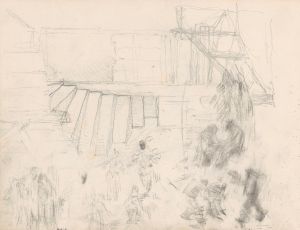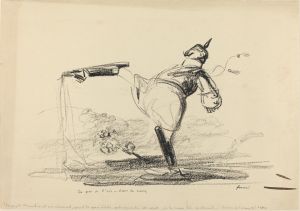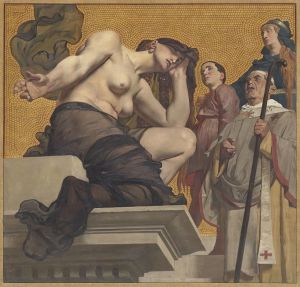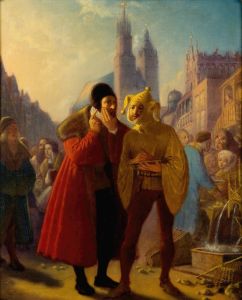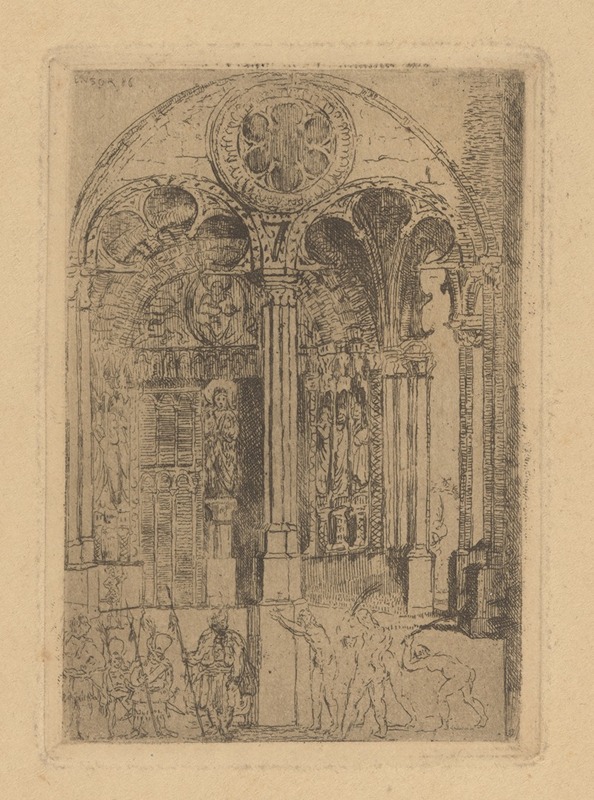
De geseling
A hand-painted replica of James Ensor’s masterpiece De geseling, meticulously crafted by professional artists to capture the true essence of the original. Each piece is created with museum-quality canvas and rare mineral pigments, carefully painted by experienced artists with delicate brushstrokes and rich, layered colors to perfectly recreate the texture of the original artwork. Unlike machine-printed reproductions, this hand-painted version brings the painting to life, infused with the artist’s emotions and skill in every stroke. Whether for personal collection or home decoration, it instantly elevates the artistic atmosphere of any space.
James Ensor, a prominent Belgian painter and printmaker, is known for his unique and often provocative works that blend elements of symbolism, expressionism, and surrealism. One of his notable works is "De geseling," which translates to "The Scourging" in English. This painting is a part of Ensor's exploration of religious themes, a subject he frequently revisited throughout his career.
James Ensor was born in 1860 in Ostend, Belgium, and spent most of his life there. His upbringing in a family that ran a curiosity shop filled with exotic and bizarre items significantly influenced his artistic vision. Ensor's work often features grotesque imagery, masks, and skeletons, reflecting his fascination with the macabre and the absurd.
"The Scourging" is a powerful example of Ensor's ability to convey intense emotion and drama through his distinctive style. The painting depicts the biblical scene of Christ being scourged before his crucifixion, a subject that has been interpreted by many artists throughout history. Ensor's rendition is notable for its vivid colors, dynamic composition, and emotional intensity.
Ensor's approach to this religious theme is both traditional and innovative. While he draws on the historical and religious significance of the scene, he infuses it with his unique artistic vision. The figures in the painting are rendered with exaggerated expressions and gestures, emphasizing the brutality and suffering of the event. Ensor's use of color is particularly striking, with bold contrasts and vibrant hues that heighten the emotional impact of the scene.
The painting reflects Ensor's broader interest in the human condition and the complexities of faith and suffering. His work often critiques societal norms and explores themes of hypocrisy and moral ambiguity. In "The Scourging," these themes are evident in the depiction of the figures surrounding Christ, who are portrayed with grotesque and distorted features, suggesting a critique of those who perpetuate violence and injustice.
Ensor's work was not always well-received during his lifetime. His unconventional style and subject matter often provoked controversy and criticism. However, he remained committed to his artistic vision, and his work eventually gained recognition and acclaim. Today, Ensor is considered a pioneer of modern art, and his influence can be seen in the works of later artists such as the German Expressionists and the Surrealists.
"The Scourging" is housed in the Royal Museum of Fine Arts in Antwerp, Belgium, where it continues to be a subject of study and admiration. The painting is a testament to Ensor's skill as an artist and his ability to convey profound themes through his distinctive style. It remains an important work in the canon of religious art and a significant example of Ensor's contribution to the development of modern art.
In summary, James Ensor's "The Scourging" is a compelling work that combines traditional religious iconography with a modern, expressive style. Through its vivid colors, dynamic composition, and emotional depth, the painting captures the complexity of human suffering and the enduring power of faith.





